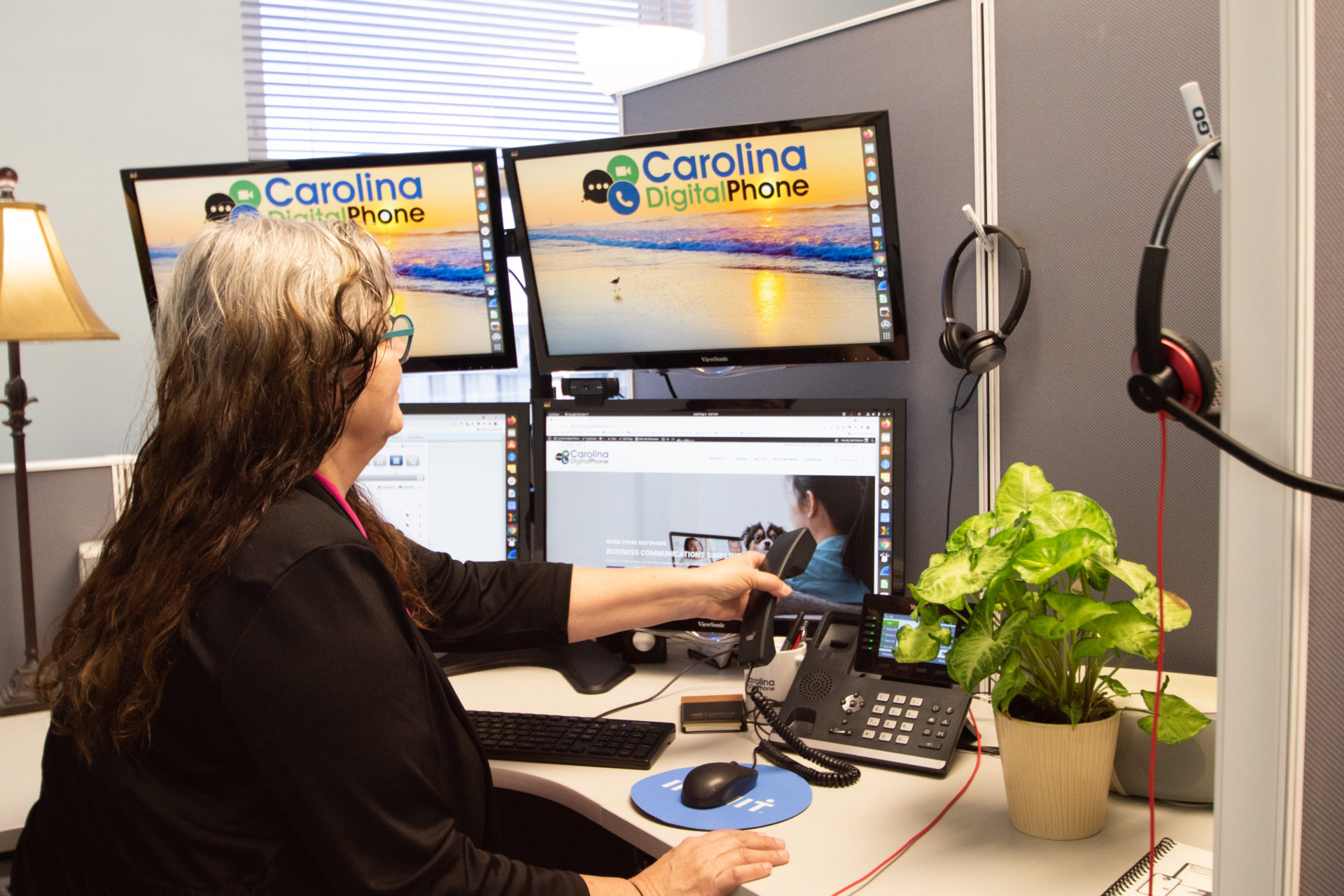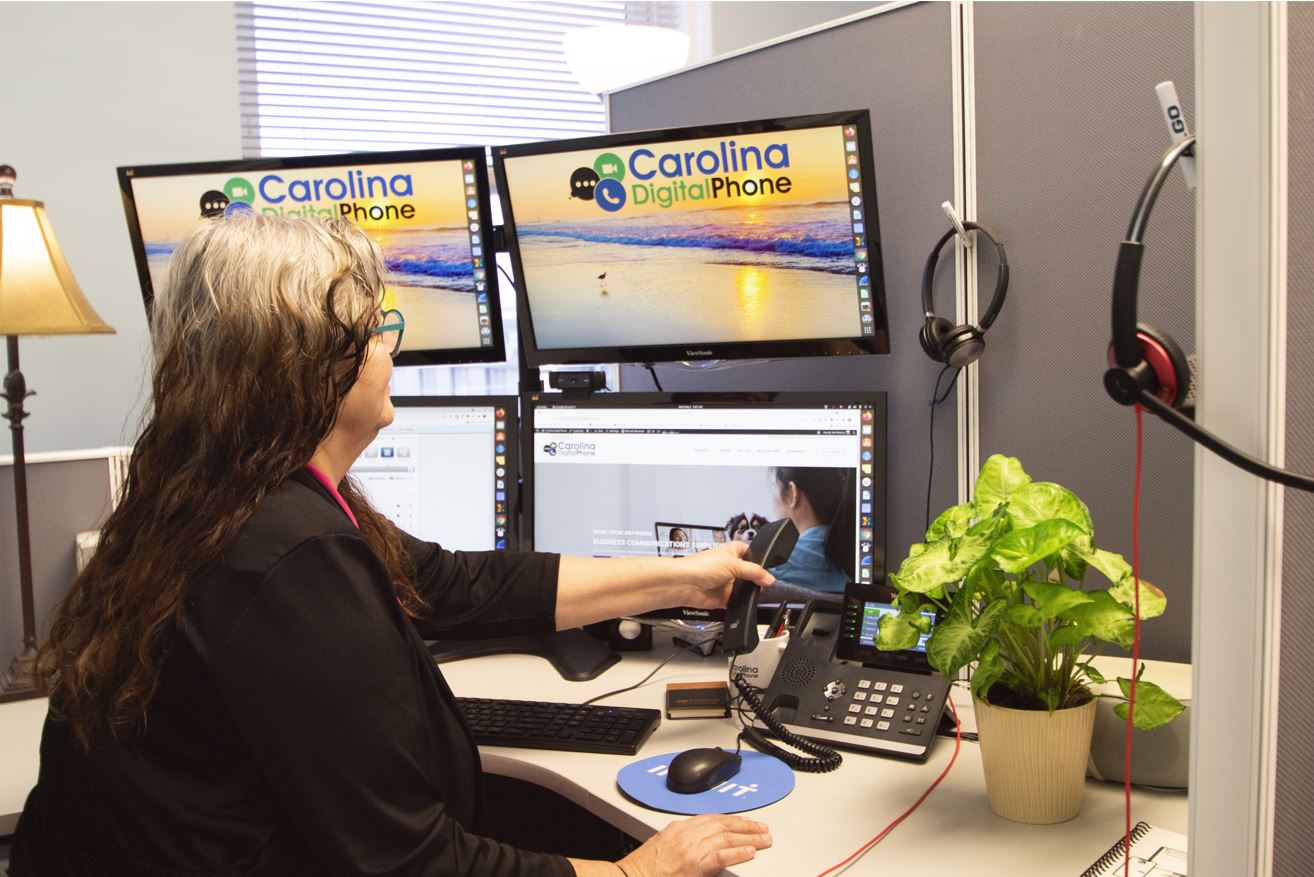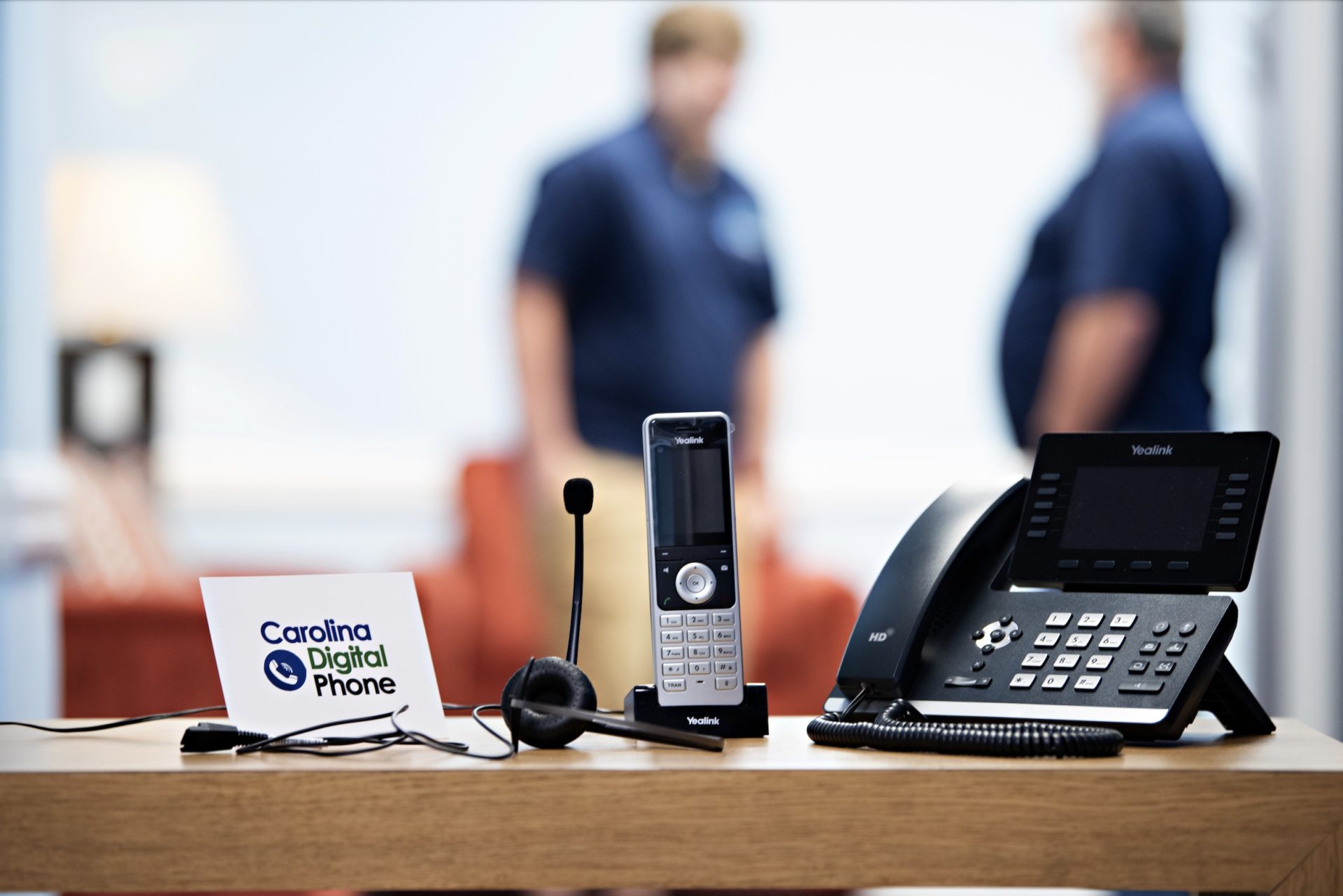The pandemic has ushered into a new era of remote working. Until early 2020, remote working was generally viewed as an optional perk. But since then, it has shifted into a fundamental necessity. A recent survey has found that 40% of remote workers would consider quitting if they were forced to return to the office full-time.
In response to this change in work habits, organizations of all sizes and across all sectors —private, public, and non-profit — have pivoted towards tools and technologies that enhance remote work by making it more efficient and productive; and at the same time, boost remote worker engagement and morale. And one of the most valuable solutions they have adopted is a virtual phone system (also known as a cloud phone system and a VoIP phone system).
Below, we highlight eight massive benefits of working remotely with an all-in-one virtual phone system, and why it has become an essential staple on the post-pandemic business landscape:
1. No Need for a Separate Home Office Landline
Most remote workers do not have a separate home office landline — and they don’t want one. According to Costhelper.com, the cost of residential phone service including long-distance can run around $45 per month. This is in addition to setup fees, maintenance fees, and hardware costs.
With a virtual phone system, remote workers can make and receive calls simply by plugging in an IP phone to their computer or laptop — no technical knowledge is required, and there is nothing to configure. And if remote workers have more than one computer/laptop in their home (which is often the case), they can simply and easily move their IP phone around as desired.
Remote workers can also access the virtual phone system with a softphone. This is done with a headset with a microphone device that plugs into their computer or laptop (similar to one they may already use for chatting with friends and family, etc.). Remote workers simply launch the virtual phone software on their machine, plug in their headset, and they are good to go!
And the best news of all? It’s all FREE. There is absolutely no need to install and maintain a separate home office landline.
2. Anytime, Anywhere Calling (and With Business Caller ID!)
Another game-changing advantage of a virtual phone system is that in addition to — or instead of — an IP phone, remote workers can make and receive calls using a smartphone. This can be their personally-owned smartphone or one supplied by their employer (or a mix of both). They can also forward calls to/from their smartphone to a landline or any other phone.
What’s more, remote workers who make outgoing calls on their personally-owned smartphones do not have to worry that their name and number will appear on the Caller ID. Instead, the business’s name and number will always appear on the Caller ID. This presents a more professional image, and it is important for privacy and compliance as well.
3. Establish a Unified Chat Platform
There are dozens of chat apps available — and more are being introduced all the time. However, one of the drawbacks of so much choice is that in some organizations, remote workers are using various apps. For example, some use Slack, others use Teams, others use Facebook Messenger, and the list goes on.
With a virtual phone system, all remote workers can use the same, easy-to-use platform to send and receive text (SMS) messages, as well as videos, pictures, and other rich media (MMS). In addition to bringing everyone onto the same platform, this also supports compliance since messaging history can be saved and reviewed as required.
4. Enable Video Conferencing
A virtual phone system leverages unified communications (UC). This is an umbrella term for the integration of several enterprise communication tools — and one of the most valuable and popular for remote workers is high-definition video conferencing. From their home office or anywhere else using their smartphone, remote workers can connect face-to-face with colleagues to brainstorm ideas, solve problems, develop plans, or carry out any other tasks. It is also possible to have video conference calls with multiple participants.
5. Easily and Quickly Onboard Workers
With a conventional landline phone system, onboarding new workers can be costly and time-consuming — especially if the on-site PBX is at maximum capacity. This is a complete non-issue with a virtual phone system. Adding new workers — including temporary and seasonal hires — can be done in a matter of minutes.
6. Boost Customer Experience with Live Call Transfer
Remote workers are not always at their desks every minute of the day. Just like their colleagues and counterparts in a corporate environment, sometimes they are on the move. A virtual phone system supports live call transfer, which enables remote workers to seamlessly shift calls from one device to another — and with no disruption to the other party.
For example, a sales rep can answer a call from a customer on her IP phone, which is plugged into the desktop computer in her home office. During the conversation, she can seamlessly shift the call to her smartphone as she makes her way outside and then shifts the call again to her car’s Bluetooth system as she starts driving. Without this feature, the sales rep would be forced to call the customer back — which may not even be possible, because by that time the customer may have connected with a competitor.
7. Use Presence to Enhance Communications
In a corporate environment, workers can take a quick look (or sometimes just a quick listen!) to learn if their colleagues are around and available. But remote workers don’t have this luxury. That is where another important virtual phone system feature enters the picture: presence.
Presence allows remote workers to instantly see if their colleagues are available, busy, or away. At the same time, managers can use this feature to ensure that remote workers are, in fact, working. For example, if a manager sees that a remote worker has set their status to “away” for several hours, he can reach out to make sure that everything is OK.
8. Monitor Analytics to Boost Performance
Managers can also boost remote worker performance by monitoring a variety of telecommunication analytics, such as call frequency, call volume, average call duration, and other metrics. This actionable intelligence can then be used to support various aspects such as coaching/training, quality assurance, compliance, and recruitment. For example, if a manager sees that a particular subordinate spends 40% more of her time on calls than the team average, this can be explored further to identify potential issues or concerns.
The Bottom Line
Remote work is here to stay — including “hybrid remote working,” which is when workers shift between their home office and the corporate environment. Organizations that upgrade to a cost-effective, future-proofed, and all-in-one virtual phone system will surge ahead and set the pace in the new world of work.
To learn more about how a virtual phone system will dramatically improve your remote workforce — and move your organization forward — contact Carolina Digital Phone today. Call us at (336) 544-4000, or click the chat icon at the bottom of your screen.




